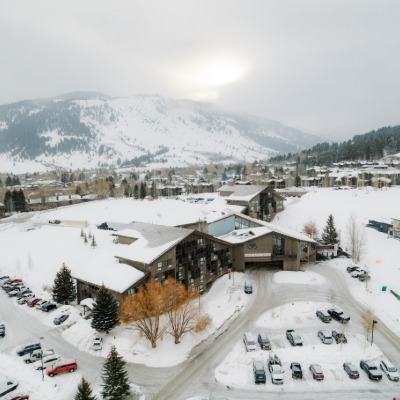Lauterbrunnen-Murren Mountain Railway Close To Completion

The final threshold has been laid on the completely new route of the Grütschalp-Mürren adhesion railway. This marks the end of the 63 million franc, four-year construction project, which also included a lot of work within the framework of the Disability Equality Act. The new rolling stock will be complete and in use in June 2024.
After around six years with larger and smaller construction stages, the work on the renewal of the Grütschalp-Mürren adhesion railway of the Lauterbrunnen-Mürren (BLM) mountain railway is coming to an end: On Friday, October 10th. November 2023, the last threshold at Winteregg was laid on the occasion of a media event. “The renewal of the Grütschalp-Mürren adhesion railway – including the Grütschalp, Winteregg and Mürren train stations – is very important as a feeder for the car-free town of Mürren and a long-term increase in the attractiveness of the location,” explained Urs Kessler, Director of Jungfrau Railways, on the occasion of the relocation last threshold. “There were intensive construction phases over a long period of time, so I am happy that we were able to carry out the work on the infrastructure around the adhesion railway without any accidents and according to schedule,” said Stefan Wittwer, Head of BLM.
Toilet facilities, lifts and underpass
But first things first in the 63 million franc project: A large part of the renovation work was necessary as part of the Disability Equality Act - for example, the toilet facilities on Grütschalp and Winteregg are now barrier-free, the Mürren train station, which was rebuilt in 2022, has a lift and the entrance into the new rolling stock will be at ground level. Since this summer, guests on the roof of the Grütschalp station have been able to enjoy the view of the Eiger, Mönch and Jungfrau from the new terrace of the Grütschalp bistro. The Winteregg crossing was also renovated, the Grütschalp workshop was modernized and the Winteregg station received a new building with a passenger underpass and lift.
The core of the work is the complete renewal of the BLM route between Grütschalp and Mürren. In total, several thousand tons of gravel, around 8,000 new oak railway sleepers and around 9,600 meters of rails were laid in several stages. For example, during the intensive construction phase in autumn 2021, where the second section from Grütschalp to Winteregg station was relocated.
The track apron at Grütschalp station and around 550 meters of track were already addressed in spring 2021. These were mostly in a water protection zone. In the future, rainwater will not be allowed to seep away in these areas, but must be channeled to the side into a collecting pipe using a barrier layer under the superstructure and thus out of the zone in question. During this construction phase, two new switches were also installed at Grütschalp station.
Rolling stock arrives in spring
The new rolling stock will not arrive in time for the construction work to be completed. As already communicated, several of Stadler Rail's suppliers are struggling with delivery bottlenecks as a result of the war in Ukraine and the pandemic. Two of the three new multiple units will not arrive until May 2024; commissioning is planned for June 2024. For BLM head Stefan Wittwer and his team, this now means that the existing vehicles need additional maintenance in order to remain in operation for longer.
After all: the first new vehicle was delivered last week, so that completion, commissioning and acceptance can take place next winter, spread over 80 days. The findings will then be incorporated into the completion of other vehicles in the factory, which will shorten the time required to put them into operation on site.
The new multiple units meet the requirements of the Equal Opportunity for Persons with Disabilities Act: They increase driving comfort, and the passenger compartment and driver's cab are air-conditioned. Two vehicles will be able to drive every quarter of an hour. The travel time can be shortened by increasing the maximum speed from 30 to 50 km/h. The old railcars built in 1967 will be taken out of service. It is still unclear where they will find a new home.













